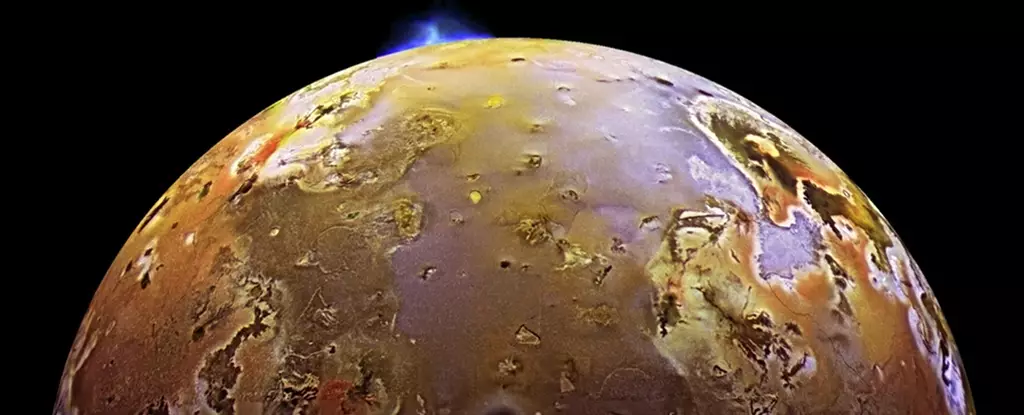The Large Binocular Telescope (LBT) in Arizona, operated by the University of Arizona, is considered one of the next-generation Extremely Large Telescopes (ELTs). Its two primary mirrors, each measuring 8.4 meters (~27.5 feet), provide a collecting area that rivals that of a 30-meter telescope. Equipped with cutting-edge technology such as adaptive optics and sophisticated instruments like SHARK-VIS, the LBT has the potential to delve deeper into the mysteries of the Universe than ever before.
Recently, an international team led by the University of Arizona used the LBT to capture images of Jupiter’s moon Io with unrivaled resolution. These images revealed surface features as small as 80 kilometers (50 miles) across, a level of detail usually reserved for spacecraft like NASA’s Juno mission. Through the use of the SHARK-VIS instrument and the telescope’s adaptive optics system, the research team, led by Al Conrad, was able to identify a major resurfacing event on Io, shedding light on the moon’s volcanic activity.
SHARK-VIS, a high-contrast optical coronagraphic imaging instrument developed at INAF-Osservatorio Astronomico di Roma, is a key component of the LBT’s success. Paired with the telescope’s Single conjugated adaptive Optics Upgrade for LBT (SOUL) system, SHARK-VIS utilizes a “fast imaging” camera to capture slow-motion footage that eliminates optical distortions caused by atmospheric interference. By processing the data with advanced software like Kraken, developed by researchers from Georgia State University, the team was able to produce incredibly sharp images of Io, revealing features never before seen from Earth.
As the innermost of Jupiter’s Galilean moons, Io has long intrigued scientists with its intense volcanic activity. By monitoring the eruptions and surface changes on Io, researchers hope to gain insights into the tidal heating mechanism that drives its volcanism. The detailed images captured by the LBT with SHARK-VIS are providing valuable information about major resurfacing events on Io, helping scientists understand the geological processes that shape planetary bodies both within our Solar System and beyond.
The advancements made possible by the LBT and its instrumentation have far-reaching implications for astronomy and planetary science. By studying volcanic activity on Io and other objects in the Solar System, scientists can draw parallels between different planetary bodies and gain a greater understanding of geological processes. The insights gained from these studies could one day help astronomers identify geological activity on exoplanets, providing clues about their potential habitability.
SHARK-VIS instrument scientist Simone Antoniucci envisions a future where the LBT’s sharp imaging capabilities will be used to observe a wide range of objects throughout the Solar System, from moons of giant planets to asteroids. The ability to capture such high-resolution images from Earth-based observatories opens up new possibilities for studying celestial bodies and advancing our knowledge of the Universe.
The Large Binocular Telescope represents a significant milestone in ground-based astronomy, offering unprecedented levels of resolution and detail that were previously only achievable through space-based missions. With its cutting-edge technology and innovative instruments, the LBT is poised to make groundbreaking discoveries and revolutionize our understanding of the cosmos.


Leave a Reply